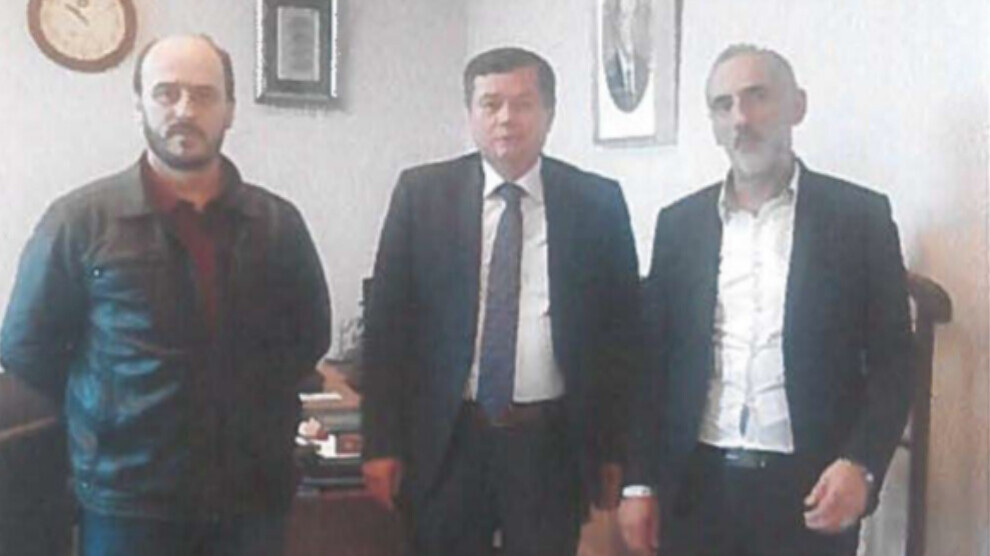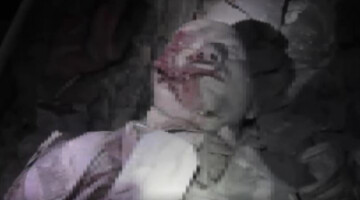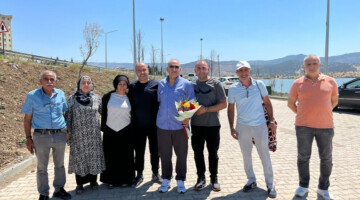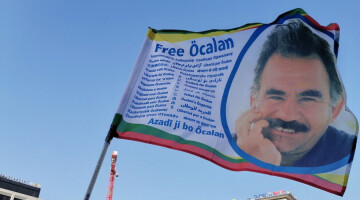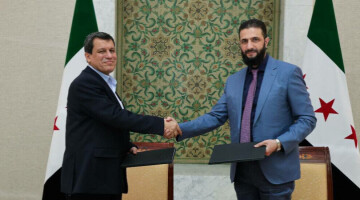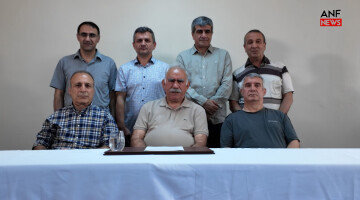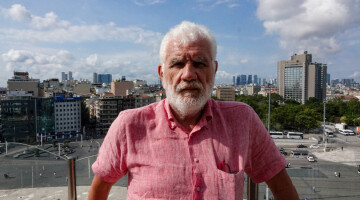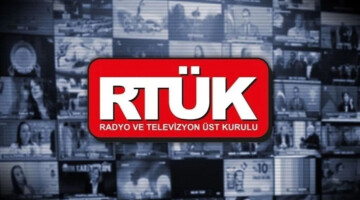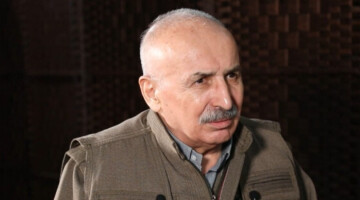Although SADAT's increasing activities in Europe in recent years have been ignored by both European authorities and major media outlets, even partial information reflected in the media indicates that the danger is big. Indeed, speaking to the US-based Huff Post in November 2018, former NATO officer Cafer Topkaya warned that SADAT was preparing to conduct operations in Germany. Major Cafer Topkaya, who was on duty at the headquarters of the North Atlantic Treaty Organisation (NATO) in Brussels, was also arrested after the coup attempt in Turkey on July 15, 2016. Topkaya, who was released on parole after spending nearly 1.5 years in prison, fled abroad after his release.
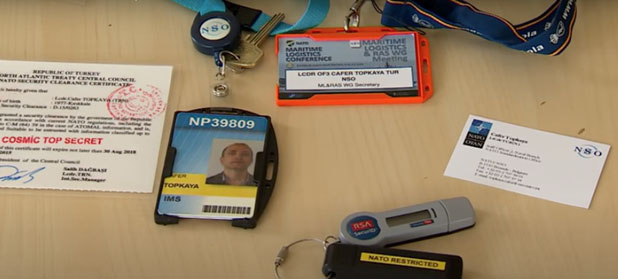
Stating that the MIT can carry out abduction operations similar to those in Kosovo and Africa in western European countries, Topkaya said that the Erdogan government will use SADAT, an armed militia force, for this. Pointing out that Sadat was the most powerful armed group in Turkey at that time, Topkaya continued:
“A friend of mine in the army told me that SADAT is attempting an operation against the dissidents in Europe. My friend is a trusted source within the military. He also stated that SADAT sends messages to its sleeping cells in Europe via Anadolu Agency (AA).
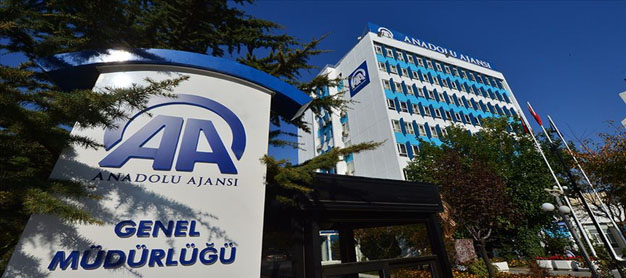
ASSASSINATION SQUAD DECIPHERED IN BRUSSELS AND ITS LINKS
The case in Brussels is considered extremely important in order to prevent Turkish espionage networks and assassination plots, which pose a great danger.
Following the investigation into the assassination attempt in June 2017 against KONGRA GEL Co- chair Remzi Kartal and KCK Executive Council member Zübeyir Aydar, it was decided to file a lawsuit on 18 June 2021.
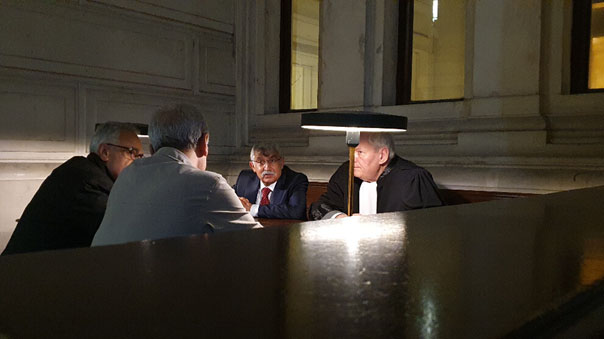
Zübeyir Aydar, Remzi Kartal and Jan Fermon- Brussel Court House
The first hearing was held on October 1, 2021. A total of four people are on trial in the case: Zekeriya Çelikbilek, Yakup Koç, Necati Demiroğulları and Hacı Akkulak. This last one Haci Akkulak is of Kurdish origin. Initially told that he was to collect information only he reveals the plot when he realises that the real aim is to commit assassinations. ,
This case is of "explosive" nature for the intelligence services of both Turkey and the Western countries it cooperates with.
Kurdish authorities want this assassination attempt, which has been deciphered, to be condemned by the judiciary. It is hoped that the case in Belgium will set a precedent for other European countries as well.
In the investigation conducted by the Belgian judicial bodies regarding the assassination attempt, in terms of the connections of the group accused of plotting the assassination striking details emerged. Especially as a result of technical tracking, important information was obtained. Investigators determined that there was a plan to "turn into a bloodbath" in the telephone call between the two people. These statements led to the investigation being taken even more seriously.
The statements in question are made in a telephone call by Zekeriya Çelikbilek, before the vehicle with the Turkish assassination team was caught in the police control portrayed as "routine" check in Brussels in 2017. It was revealed in the investigation that there was an exploratory work and a search for material for the assassination.
According to the information in the case file, since Çelikbilek lived in France, another member of the team, Yakup Koç, nicknamed "Colonel", went to France to join him was mobilised from there. Yakup Koç had drawn attention with an ID belonging to the Turkish police on him during the police check in Belgium. In the investigation, it was established that Koç also worked at the Turkish Embassy in Paris.
Due to the team's epicentre being in France, the Belgian judiciary asked the French authorities to conduct an investigation within the framework of International Judicial Cooperation. The French police began to listen to the telephones of those involved in the assassination network. Only some of them were shared with the Belgian authorities. Jan Fermon, the lawyer of the Kurdish politicians, stated that they had the impression that France did not share all the information with Belgium. According to Fermon, France withholds significant information.
However, as a result of the wiretaps, it was understood that not only Çelikbilek and Koç, but also a group of people were related to one another. The chief of the team is thought to be Yakup Koç.
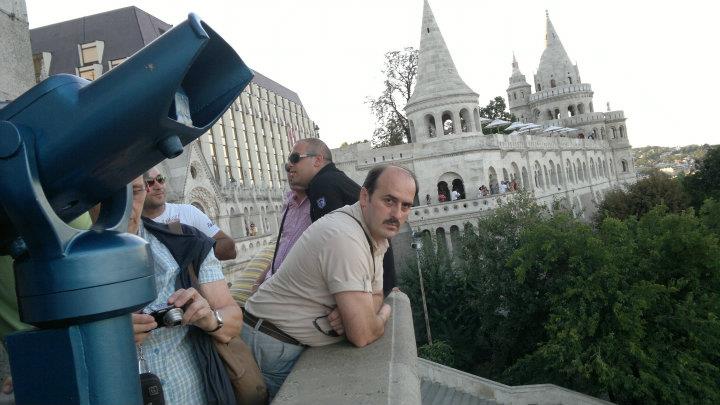
Chief of the Team Yakup Koç
It was determined that all of the group acting together had connections with the Turkish Embassy in Paris. The team also has direct links to Ankara. Many members of the team have photos taken with an adviser to Erdogan at the Presidential Palace in Ankara.
The team members are known for professions such as electrician, used car salesman, etc. For example, Çelikbilek introduces himself as an electrical engineer.
But there is a different picture in the background. “Tomorrow I have to go to Belgium for the homeland,” one of them says in wiretaps. In 2017, he goes to Ghent, Belgium, and procured a car from a "Turkish businessman" Necati Demiroğulları and drive to Ankara with it. Demiroğlulları is also the brother-in-law of Yakup Koç and is responsible for all logistics of the assassination team. Demiroğulları makes false documents for Yeşilyurt, presenting the vehicle as a "company vehicle" and Yeşilyurt as a "company employee". Yesilyurt puts Yakup Koç into action to get these things done. Koç asks brother-in-law Demiroğulları to take care of the job. For this purpose, Yeşilyurt's passport and other necessary documents are requested. In the investigation, copies of the passport and other documents are found on Demiroğulları's WhatsApp account. Thus, the Belgian judiciary decides to further deepen the investigation into Yeşilyurt.
Yeşilyurt, registered to the Trabzon province registry office, died on April 8, 2021, at the age of 41, due to "Covid-19". His body was sent to his hometown. During the investigation, it was determined that İrfan Yeşilyurt had sent a parcel to Istanbul with Chronopost before he died. Yeşilyurt called Chronopost and asked why his package did not reach his address and got angry. When Chronopost asked what was in the package, İrfan Yeşilyurt replied that he had a list of names and telephone numbers. The French police, that questioned Yesilyurt, asked what he had sent to Istanbul. Yesilyurt claimed to have a list of names and telephone numbers. When the police asked what kind of name list it was, they received an inconsistent response. Yeşilyurt argued that he went to the cemeteries in France, wrote down the names of the Turks buried there and sent them to Ankara. The fact that the French police were content with this answer also raised questions. It was surprising that the dead had telephone numbers.
There is another remarkable development regarding Yeşilyurt. Belgian investigators realised that Yeşilyurt was detected by a secret warning system in the Schengen area. In other words, every time the Yeşilyurt border crosses, it is forwarded to the relevant units. This means that the French were following Yeşilyurt. According to Fermon, Yesilyurt was strangely removed from the Schengen warning system and its traces were erased when Belgian authorities began to ask questions.
Another name identified in this network is Sami Koç. He is Yakup Koç's nephew. There is another person called “Avni”. When the French police track them down, they realise that they have received special training, as this group is using a technique to prevent wiretaps. In other words, they knew how to prevent wiretapping.
In the investigation, it is understood that the epicentre of the assassination team sent to Belgium is France.
The photographs of the subjects of the investigation with İsmail Hakkı Musa, the Turkish Ambassador to France at the time, reveal the team's connections. Çelikbilek and İsmail Hakkı Musa are standing side by side in one of the photo frames. In the investigation file carried out in Belgium, there are clues that the "actions of this network of spies and assassinations were coordinated by İsmail Hakkı Musa" in Europe. Musa, the former number two of the MIT, as the suspicions on him grew stronger, returned to his country on 14 March 2021, announcing that his term at the embassy had expired. Musa was the number two name of the MIT at the time of the murder of three Kurdish female revolutionaries in Paris in January 2013.

Zekeriya Çelikbilek (left) and İsmail Hakkı Musa (middle)
While some photos were shared on social networks, some were taken from Çelikbilek's mobile phone. During the interrogation, Çelikbilek claims that one of the photographs was sent by Yeşilyurt.
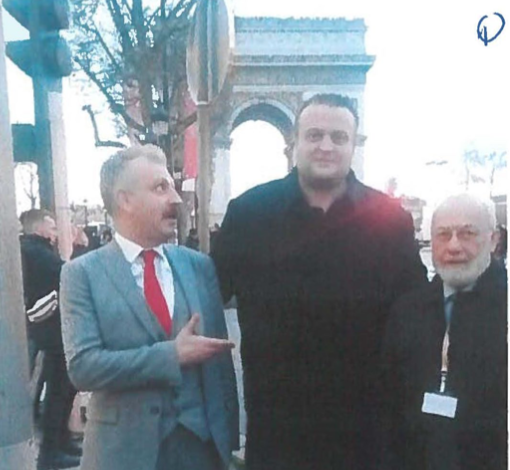
İrfan Yeşilyurt (middle), Adnan Tanrıverdi (first from right)-Paris
Yeşilyurt is standing between two people in the photo. When Çelikbilek is asked who they are, he says that one of them is from the family, one is Yeşilyurt, and the third is not known to him. However, one of the people he claims he does not know is Adnan Tanriverdi who is the founder of SADAT that is abbreviation of the International Defence Consulting Company. This person was also the personal adviser to Turkish President Recep Tayyip Erdogan.
Tanriverdi also drew attention, especially when visiting Paris with Erdogan in 2018. His name was not mentioned in the official delegation. The team has photos taken with Tanrıverdi both in Ankara and in Paris.
PHOTOGRAPH
It was revealed at the investigation that the team, that was based in Paris and disguised as electrician or second-hand car salesman, was tasked with meeting Tanrıverdi and Seyit Sertçelik, the adviser to Turkish President Recep Tayyip Erdoğan. Seyit Sertçelik was one of the names Erdoğan affiliated with during his visit to Paris. He is the Chief Advisor to President Erdoğan and a member of the Presidential Security Policy and Foreign Policy Board. Prof. Dr. Seyit Sertçelik appears to be mainly busy with denying the Armenian Genocide.
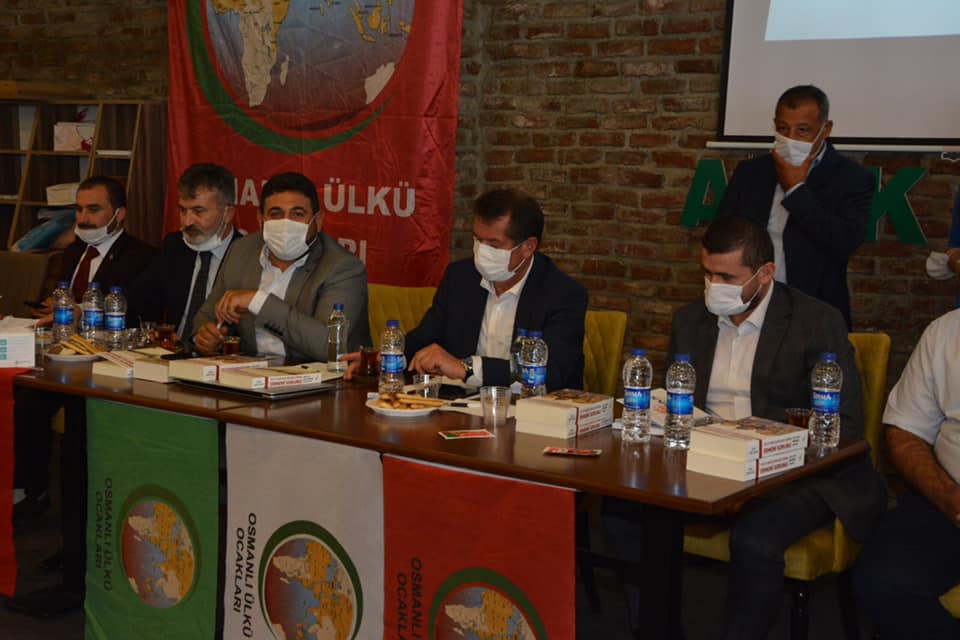
Seyit Sertçelik, with Osmanlı Ülkü Ocakları (Grey Wolves)- August 2020
He is photographed visiting a Turkish prison in the Afrin, a city in Rojava, which was occupied by the Turkish state in March 2018. He also shared this photo on his Facebook page.
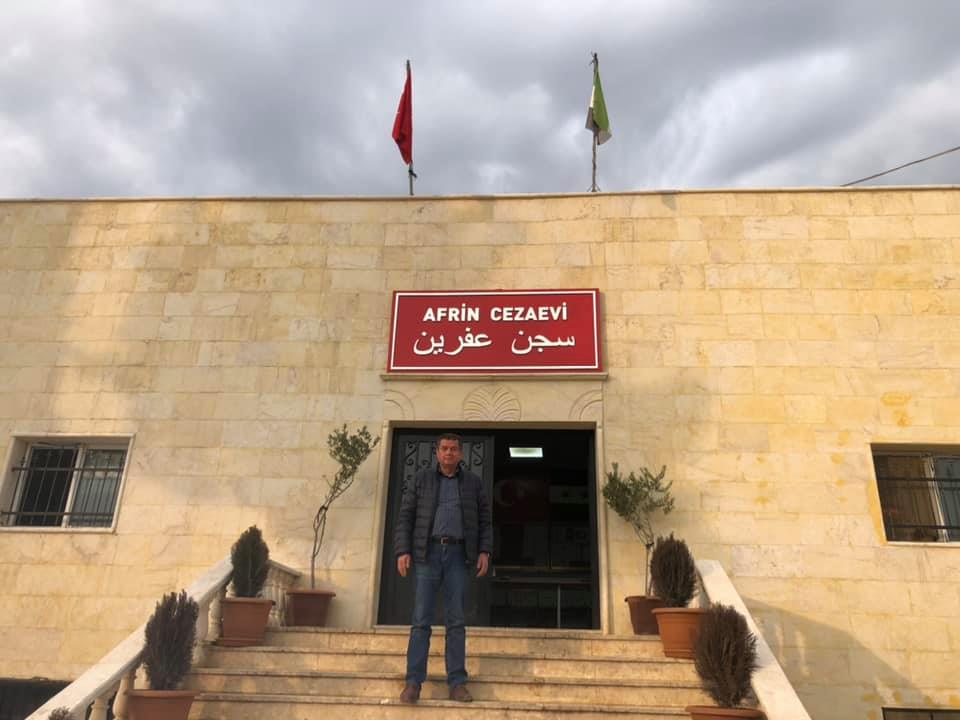
Erdoğan’s Advisor Seyit Sertçelik, in front of a prison in Efrin that was occupied in 2018
However, his other photos, which were not made public, show that Sertçelik went much further. For example, he has photos taken in both Paris and in the Presidential Palace in Ankara, with the network of hitmen in Europe.
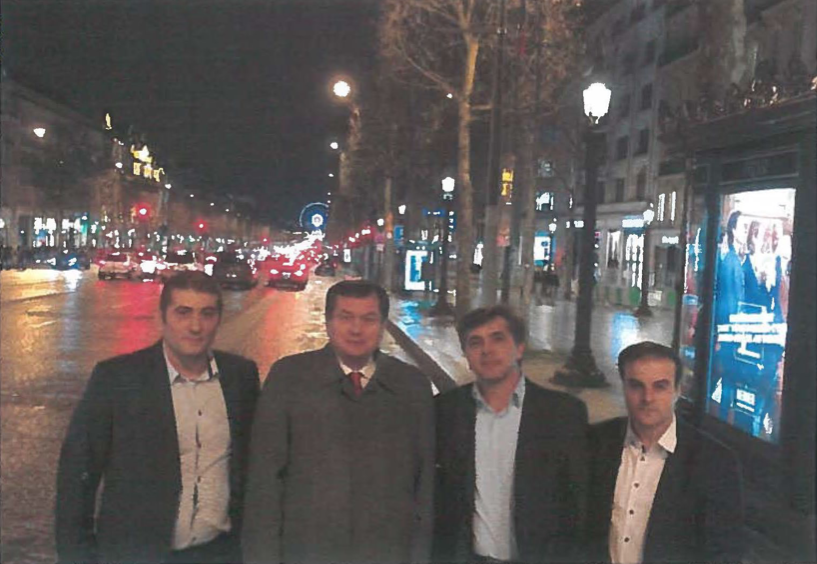
Zekeriya Çelikbilek (first from left), Seyit Sertçelik (second from left)-Paris
Two photographs of Sertçelik in particular draw attention. One with Çelikbilek in Paris, the other with Keskin and Koç in Ankara. Zekeriya Çelikbilek took the photograph in Ankara. These three people visited Sertçelik at his office located in Erdogan's Palace in Ankara.
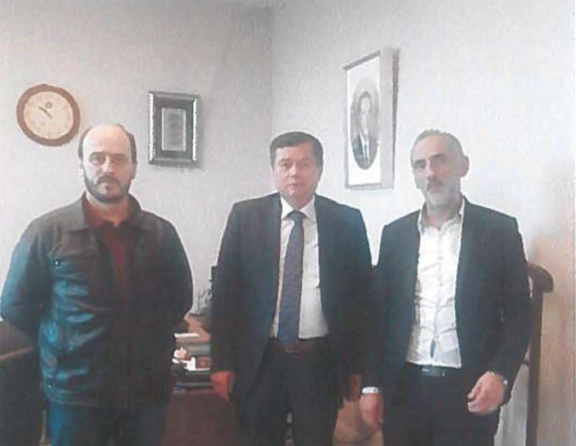
Yakup Koç (right), Sertçelik (middle), Mustafa Keskin (right)-Presidential Palace-Ankara
Çelikbilek's phone also contains a piece of paper and photographs containing the name of a military attaché at the Paris Embassy. The military attaché, whose name cannot be learned, describes everything he has done for the AKP in this paper. When the French police asked Çelikbilek what it meant, he said that the military attaché was accused of being affiliated with the Fethullah Gülen Community and was asked to give mentioned paper to Erdoğan if he was to get apprehended.
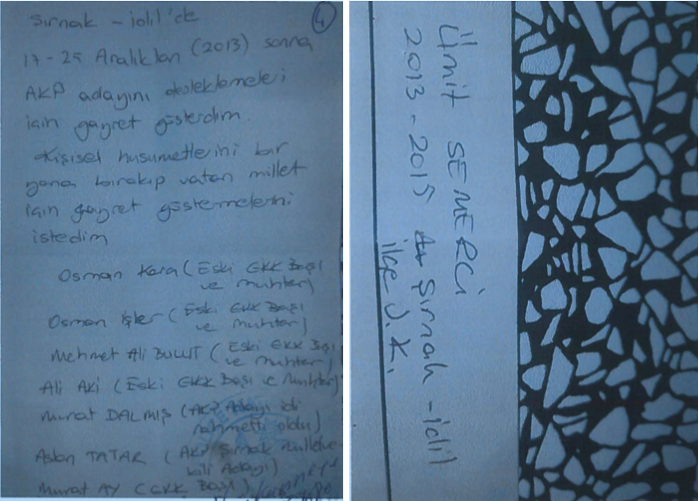
The note given to Zekeriya Celikbilek by the military attaché to deliver it to Erdogan
When Çelikbilek and the military attaché met at the embassy in Paris after the coup attempt in 2016, such written request was sent to him. If Çelikbilek is only an "electrician" as he claims, the question of why the military attaché delivered this message to Çelikbilek so that it can be conveyed to Erdoğan arises. In brief, the military attaché knew that Çelikbilek had direct ties with Ankara.
The file before the court in Belgium consists of 7,000 pages. Zübeyir Aydar, who was the target of the assassination attempt, said, “The existence of a criminal network is very clearly revealed in this file. The assassination plans have been exposed in all clarity, and it is clearly in the file that this is directly in association with the MIT, the Turkish government and even Tayyip Erdogan.”
The prosecutor, who is dealing with the file, argues that there was no assassination attempt and that it could be an intelligence activity. Lawyer Jan Fermon said, “The facts in the file indicates something completely different. It was clear to me that there was an assassination attempt. The prosecutor's comment is quite surprising,” he says.
Many questions regarding those people who have connections with the summit of the Turkish state are waiting answers. While Turkey does not contribute in any way to the investigation, insufficient information sharing by France raises suspicions. No investigation was initiated against group member Yakup Koç, Turkey and no investigation was done in that country.
Part one can be read here
Part two can be read here

